INTRODUCTION
Brief
Finding a suitable parking spot in any crowded city is exceptionally difficult, time-consuming, and frustrating. A smart parking application can help drivers save time and frustration by showing them the real-time availability of parking spots, as well as the location and cost of nearby parking garages and lots. This can help drivers avoid the frustration of driving around looking for a parking spot, or of overpaying for a spot they find.

BACKGROUND
The Great Parking Problem
Finding a good parking spot is extremely difficult in urban areas, especially in busy or densely populated areas. This problem can be caused by a number of factors, such as a lack of available parking spaces, poorly designed parking lots, and inefficient parking management systems.
Limited number of parking spaces
In urban areas, there may not be enough parking spaces to accommodate the number of vehicles looking for a spot. This can lead to long search times and frustration for drivers.
Lack of real-time information
Without accurate and up-to-date information about parking availability, drivers may waste time searching for spots that are already taken.
Inefficient use of parking spaces
Parking lots and garages may not be designed or managed in a way that maximizes the use of available spaces. This can lead to empty spots remaining unused while drivers search for a spot elsewhere.
Difficult navigation to the parking
Parking garages and lots can be hard to navigate, causing confusion and delays for drivers.
High demand for parking
In busy areas, there may be more drivers looking for a spot than available spaces. This can lead to competition for spots and long wait times.
Inconvenience and lack of security
parking spots that are far away from the destination, poorly lit, and poorly maintained can put the driver and their vehicle at risk and will make the parking experience less pleasant.
High parking costs
In some areas, parking can be expensive, which can deter people from visiting or spending time in those areas
Payment and Permit issues
The complexity of paying, the availability of different types of permits and the lack of clear communication can be a source of frustration for the drivers.
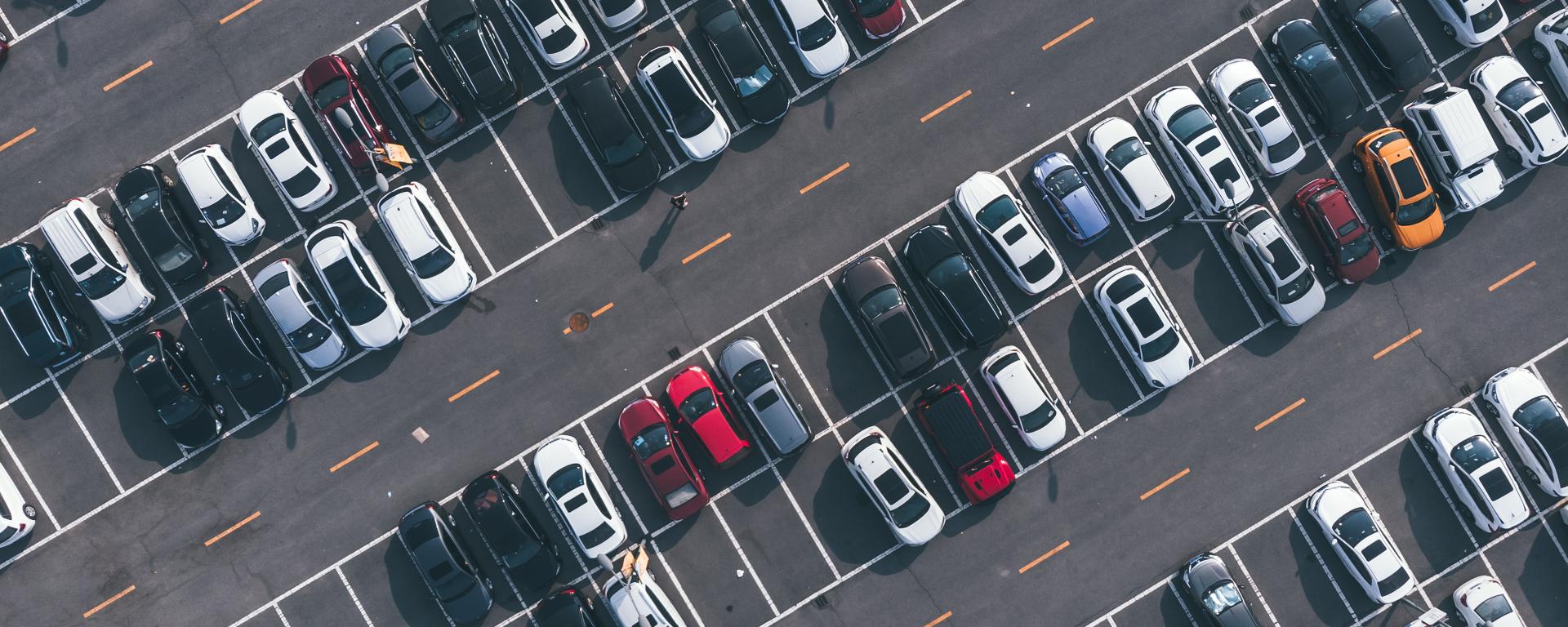
RESEARCH
User Interviews
In order to design a user-friendly smart parking system, I have conducted in-person user interviews to gather insights into the needs, behaviors, and pain points of drivers who use urban parking facilities.
By observing users in real-world parking situations and having in-depth conversations with them, I was able to gain a detailed understanding of their context, motivations, and problems. This information was crucial in identifying key areas for improvement and in developing a smart parking system that addresses the specific needs of the users. In-person interviews also provided the opportunity to observe users’ verbal and nonverbal cues, which provided additional information and insights.
Some of the significant pain points are illustrated below
RESEARCH
Statistical Findings
According to the National Renewable Energy Laboratory, drivers in the United States spend an average of 17 minutes searching for a parking spot.
According to the National Renewable Energy Laboratory, each year in the United States, circling for parking causes drivers to burn an estimated 2 billion gallons of fuel and release 21 million tons of greenhouse gases.
In some downtown areas, the cost of parking can exceed the cost of a hotel room.
In the United States, 30% to 40% of the cars on the road during peak hours are actively searching for a parking spot, according to the Urban Mobility Report by Texas A&M Transportation Institute.
According to the National Parking Association, the average occupancy rate for a parking lot in North America is around 75%
According to the International Parking Institute, the global parking market is expected to reach $193 billion by 2025.
According to a study by the University of California, Americans waste more than 4 billion hours each year looking for parking spots
According to the FHWA in 2019, the total number of registered vehicles in the US was around 277 million
In 2015, on-street parking generated $15.5 billion in revenue for cities in the United States, according to the National Renewable Energy Laboratory.
In San Francisco, parking takes up 17% of the city‘s land area.
According to the International Transport Forum, up to 30% of the traffic in cities is caused by drivers searching for a parking spot, and it results in increased air pollution, and in some cases, contributes to the city’s congestion.
In the United States alone, there are around 900 million parking spots
SYNTHESIS
User Journey Map
After I had some sense of what the central problems and desires were, I decided to really probe into our users’ minds by mapping out a potential customer journey. This allowed me to further understand how users interact with the parking solution (at different stages like pre-parking, during parking, post parking) to identify areas that may be causing friction and prioritize what needs to be improved. It allows to create a more seamless and user-centered experience, by addressing the pain points, at each stage of the customer journey.
The driver may have an urgent need to park their vehicle, such as commuting to work or running errands, and this might be a key touchpoint for their motivation to find a parking spot.
- Need to park their vehicle
- Urgency to find a parking spot
- Type of parking spot needed (street parking, garage, covered, etc.)
The driver may be aware of different parking options, such as street parking or parking garages, and may use their phone, a map, or ask for recommendations from friends or family to make a decision. These options can be touch points for the awareness stage.
- Available parking options in the area
- Use of phone, map or recommendations from others to find parking options
- Cost, location, security and the ability to reserve a spot
The driver may search for a parking spot by driving around the area or by using a mobile app. This stage can be a key touchpoint for the driver as they may encounter problems such as difficulty finding a spot or navigating to the spot.
- Navigation to the parking spot
- Finding availability and prices of parking spots
- Comparing different parking facilities
- Real-time information of parking spot availability
The driver may evaluate the available parking options and decide on a spot that meets their needs. Cost, location, security, and the ability to reserve a spot can be touch points for the driver in the decision-making stage.
- Cost and location of the parking spot
- Safety and security of the parking spot
- Ability to reserve a parking spot
The driver finds and selects a parking spot and may use a mobile app to reserve or pay for the spot. This stage can be a key touchpoint for the driver as they may encounter problems such as difficulty reserving a spot or understanding the payment process.
- Reserving and paying for parking spot
- Processes for reserving and paying for parking spot
- Navigation to the parking spot
- Confirmation of reservation or payment
After parking their vehicle, the driver continues with their day’s activities. They may be satisfied with their parking experience or may encounter problems, such as difficulty finding their car later or high costs.
- Finding the car later
- Overall satisfaction with the parking experience
The driver evaluates their parking experience and can provide feedback or rate the spot or leave a review, this stage can be a touchpoint as well.
- Feedback, rating, and review of the parking spot
- Referral to others
THE PROBLEM & SOLUTION
With a clear understanding of our target user, it was time to analyze the data and develop a well-defined problem statement and solution that addresses the gaps in the current parking Experience.
The solution in question?
A smart parking system designed to eliminate the hassle and frustration of finding and booking a parking spot at a preferred parking spot (based on location, review/feedback from users) in advance with a user friendly online booking system. The solution should also offer a range options for short and long term parking, Integrated navigation assistance so that drivers can easily find their way to the spot, easy payment options, On-demand booking and real-time parking data, so that drivers can find open spots quickly, park hassel free, all without the need of human intervention.
FEATURE PRIORITIZATION
Using the MOSCOW Method
To Be Updated
WIREFRAMES
Mid-Fidelity Wireframes
Created mid fidelity prototype to test user flows and gather feedback on usability and overall design before moving forward with UI design/development. This allowed to identify and address any potential issues or pain points early on, ensuring that the final product would be as user-friendly and efficient as possible. Additionally, by testing the prototype with a diverse group of users, i was able to gather valuable insights and make informed design decisions that would ultimately benefit all users.
The prototype also served as a visual representation of the desired end product, allowing for better communication and collaboration with the development team.

FINAL DESIGN
UI Design Pages / Elements

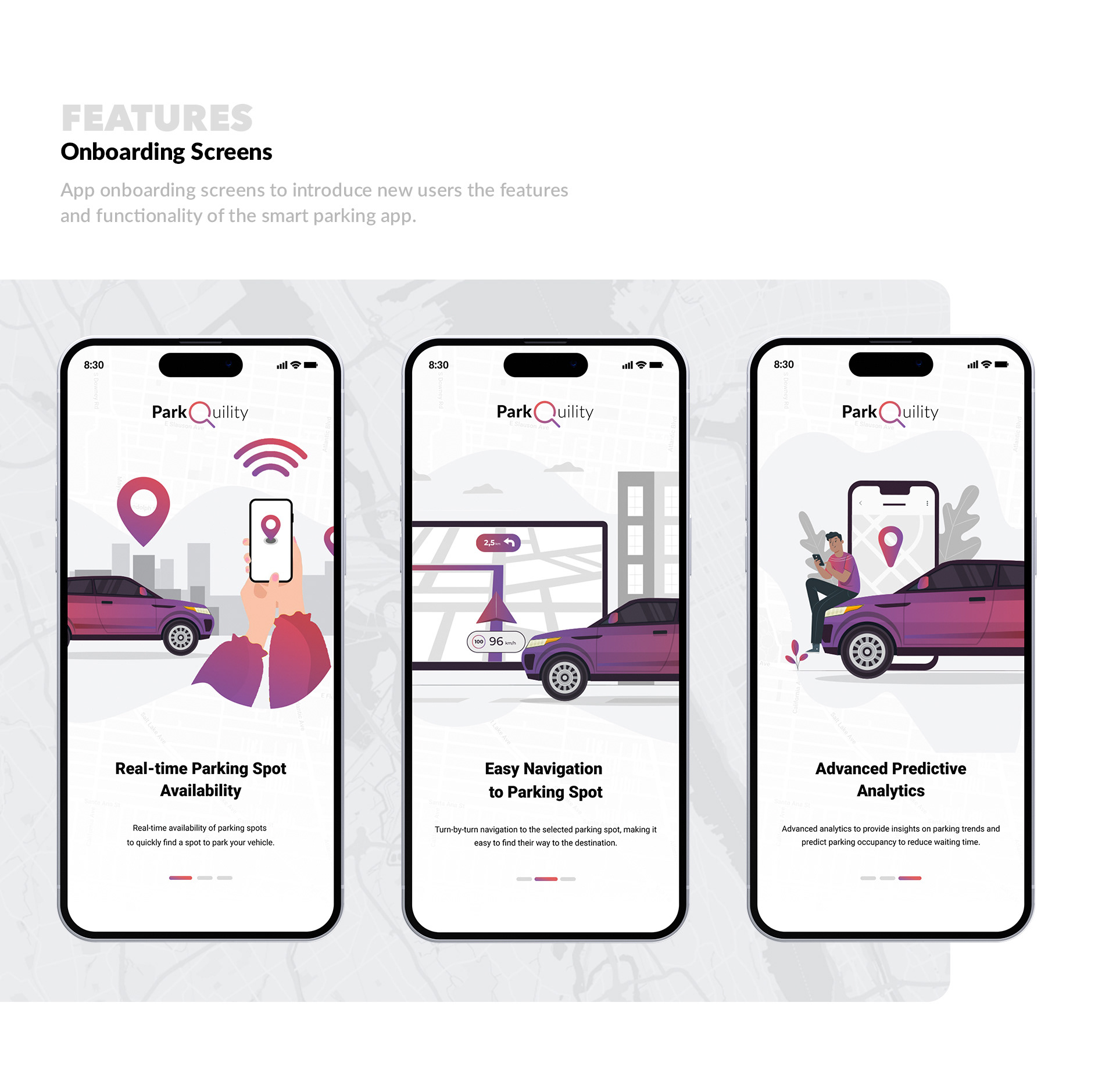
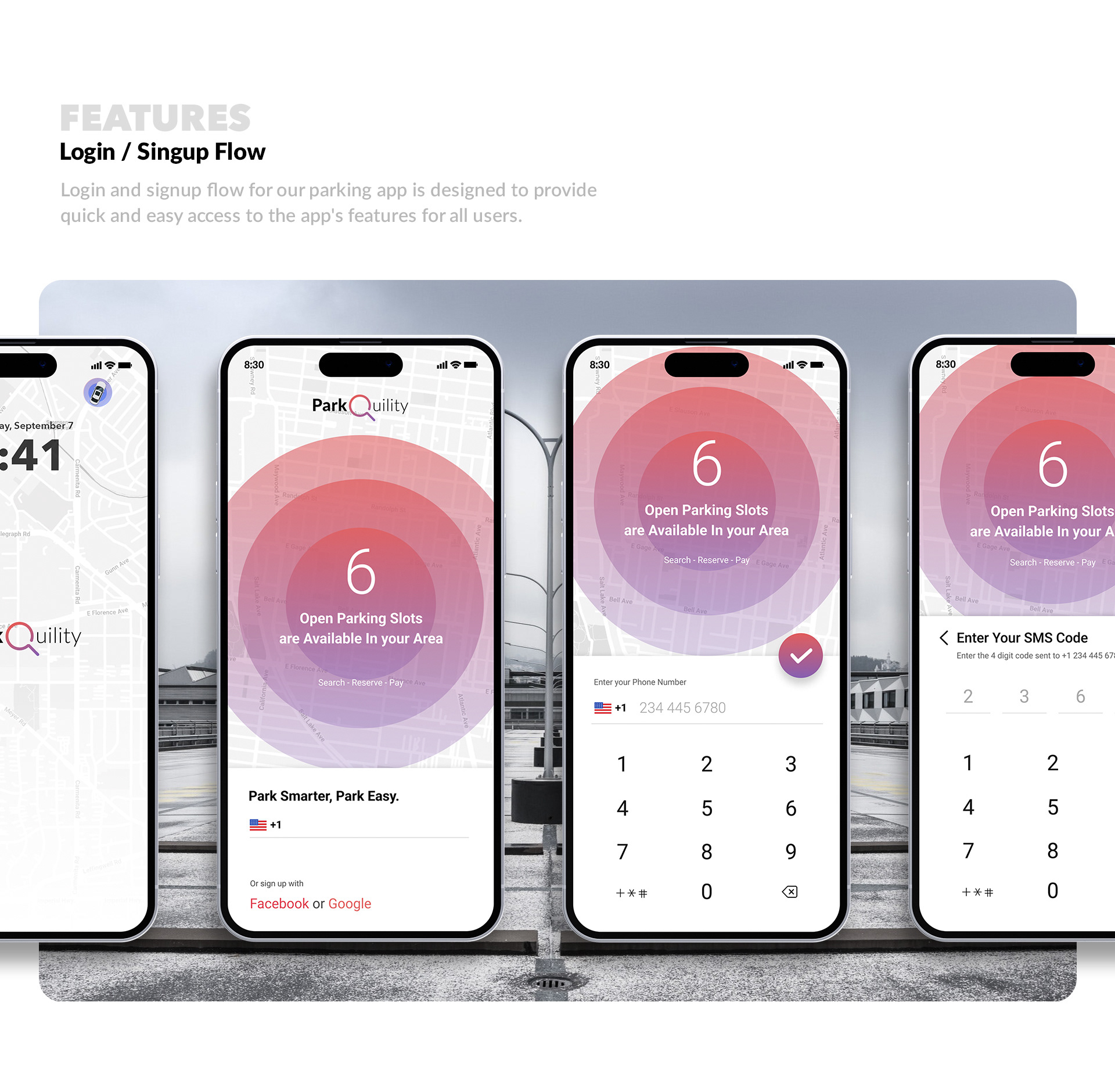
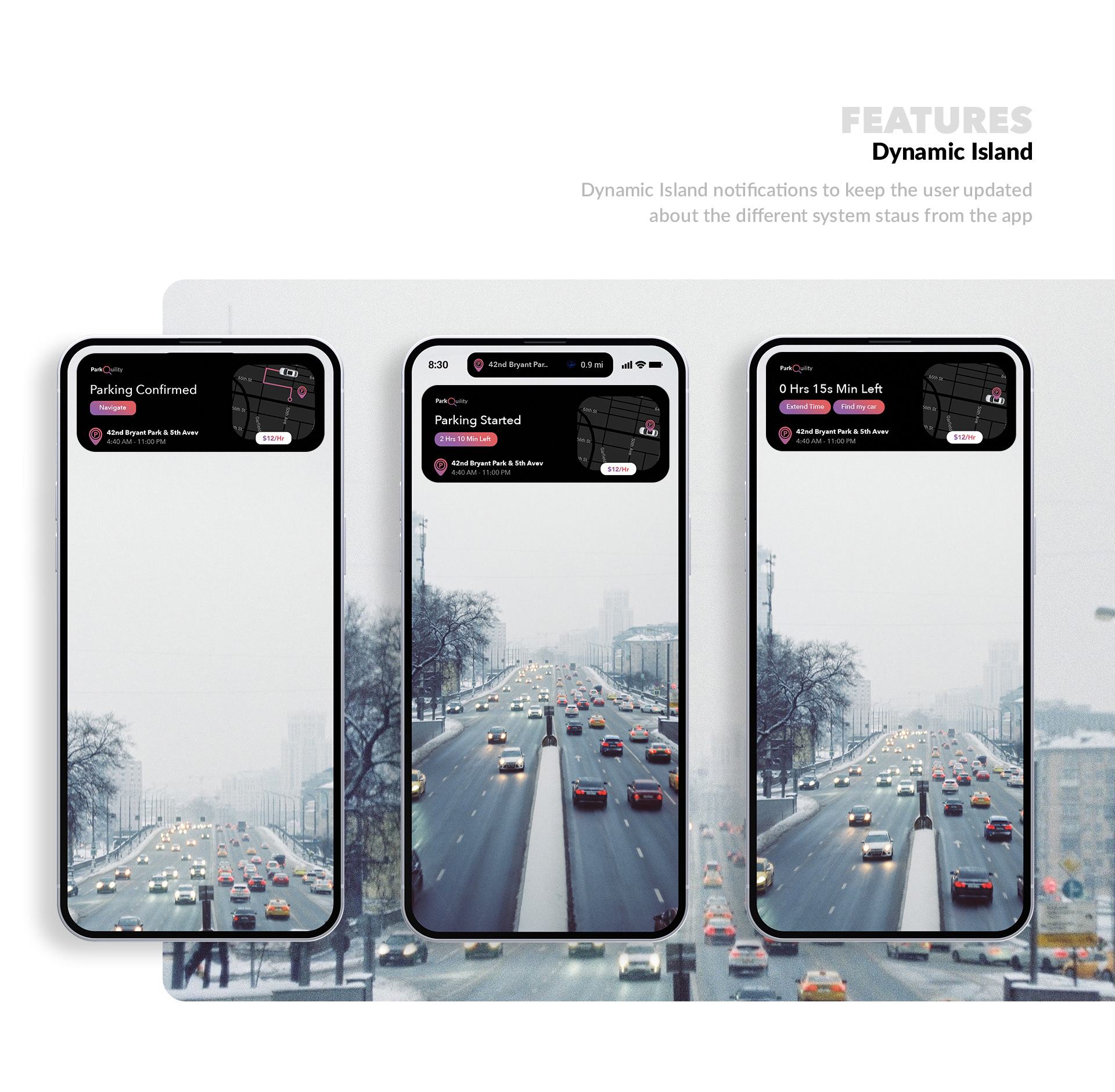
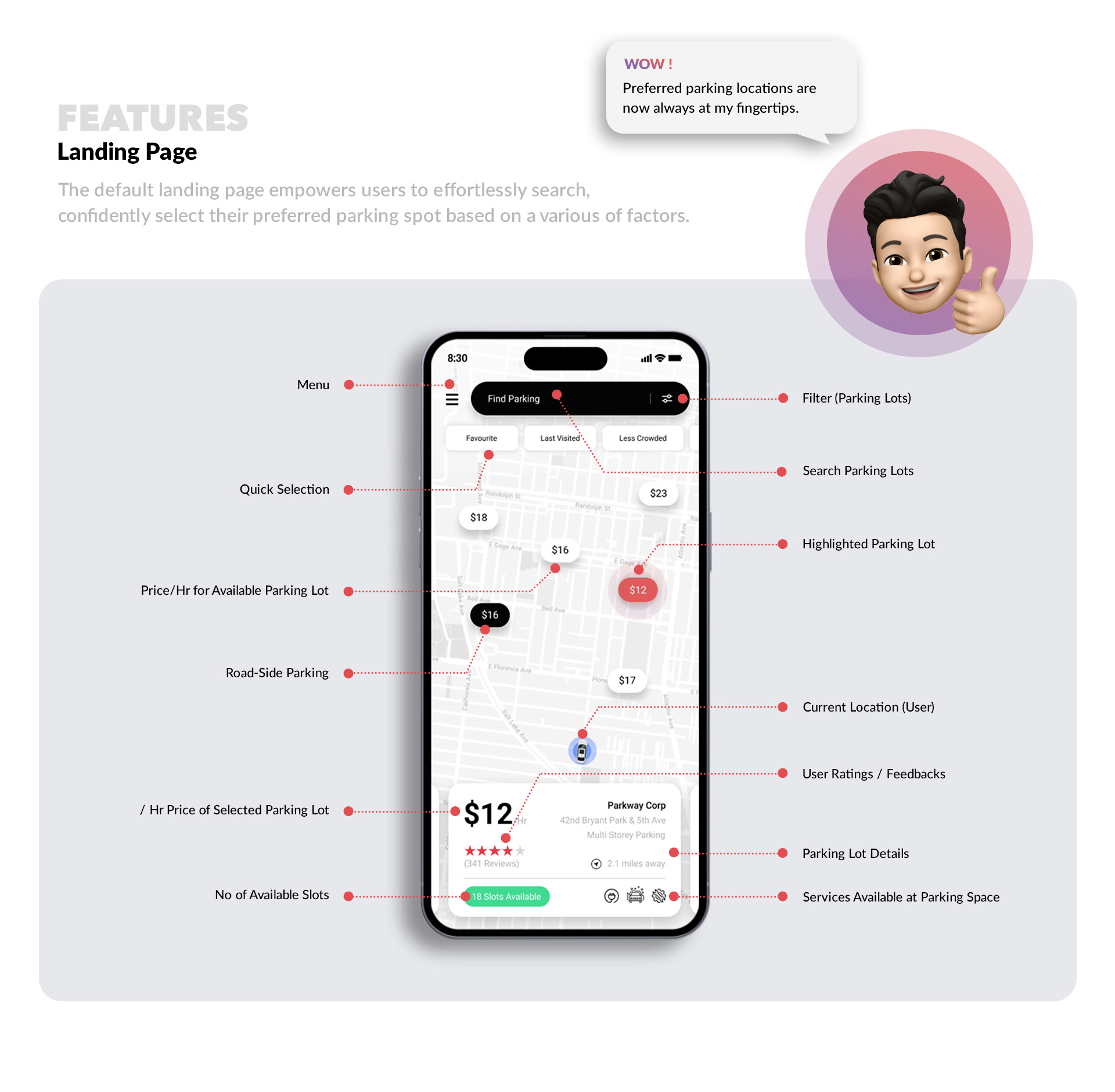
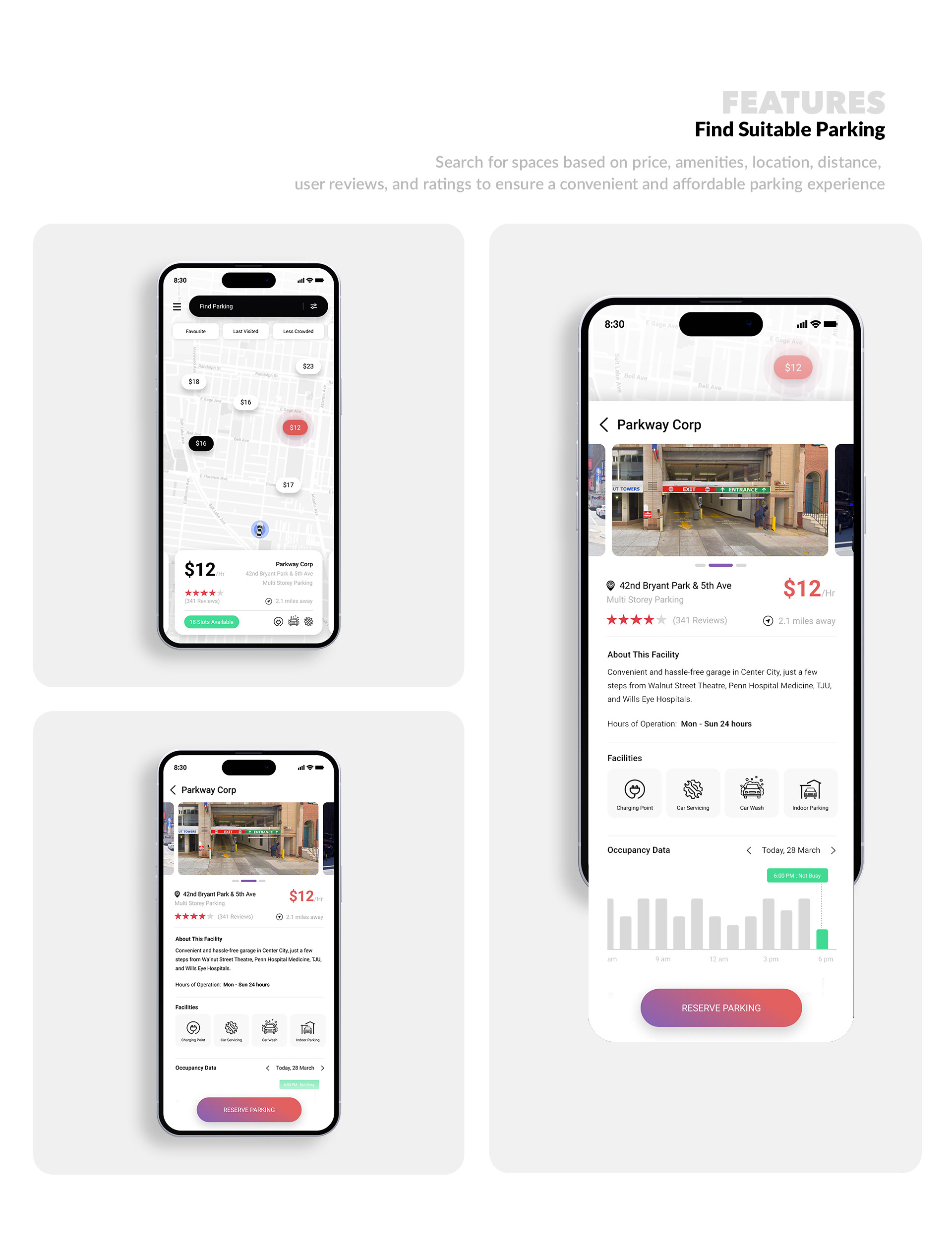
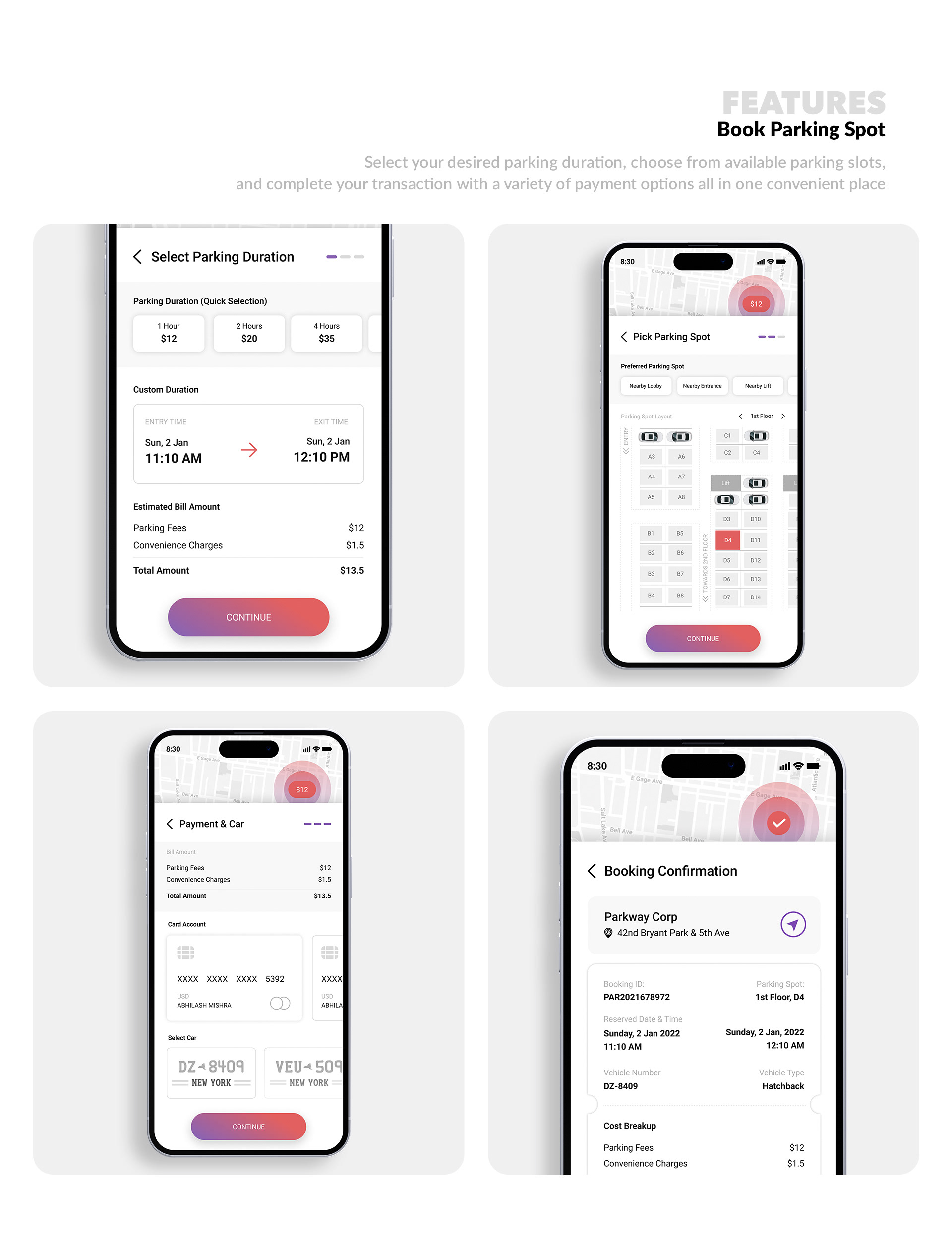
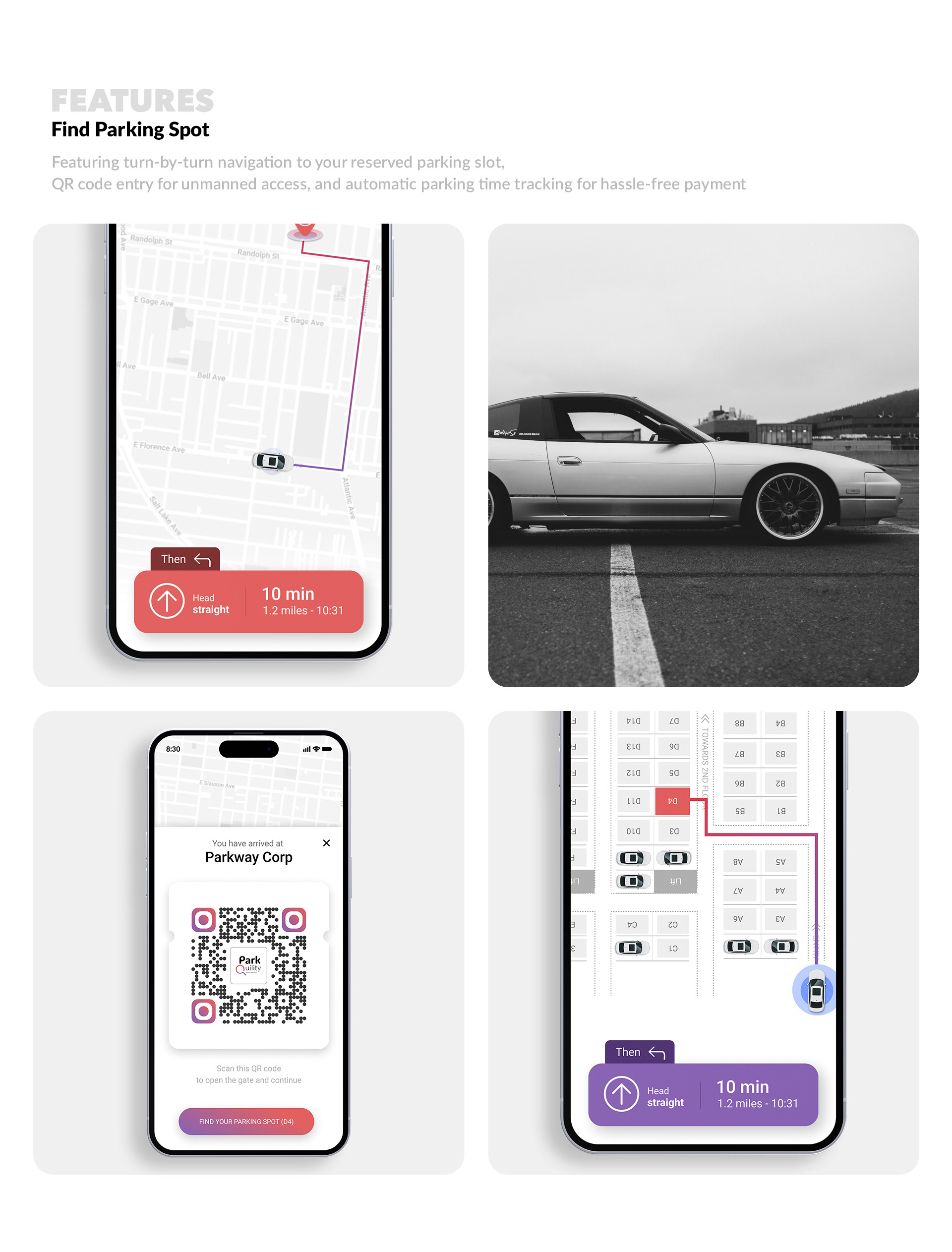
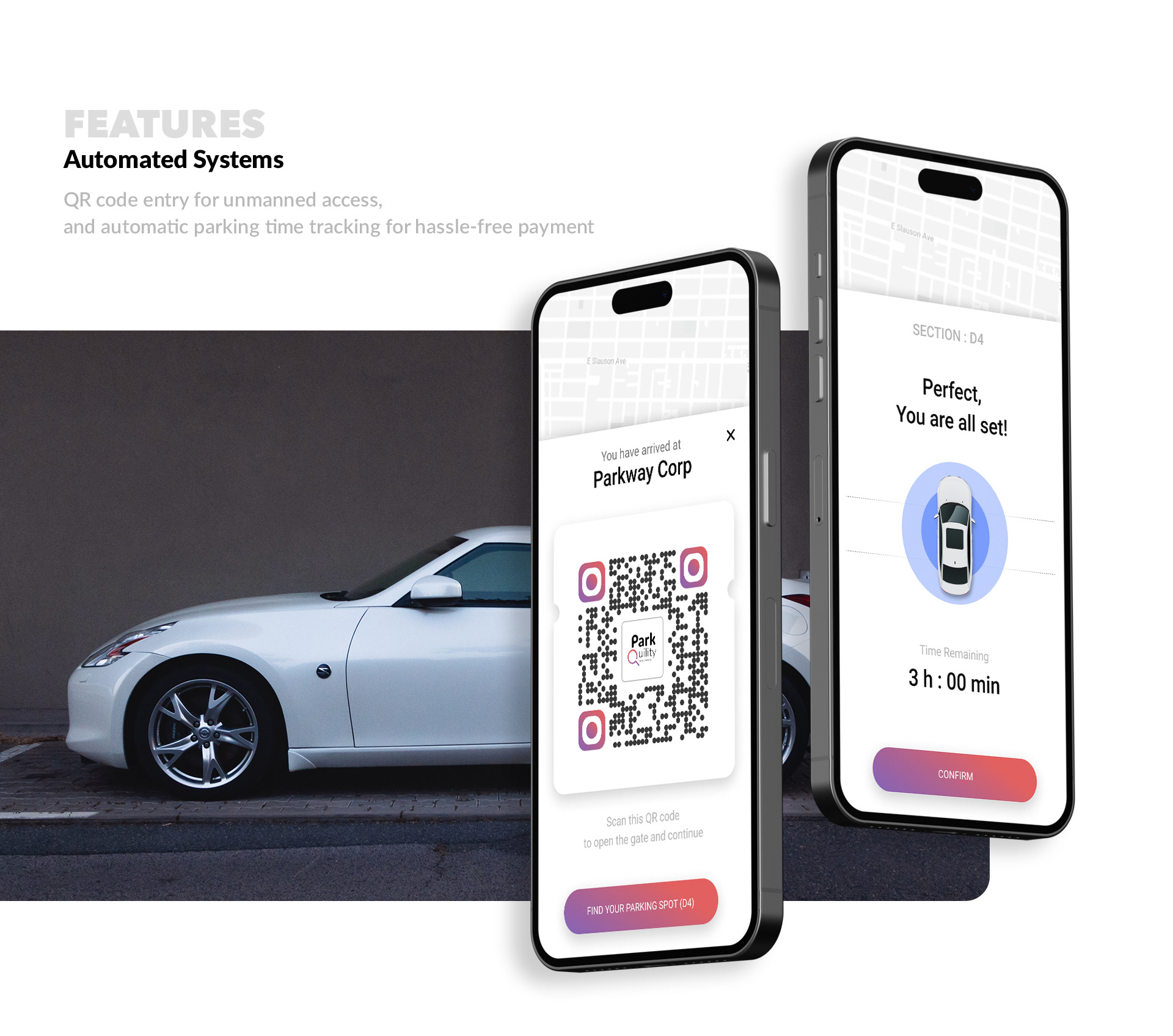
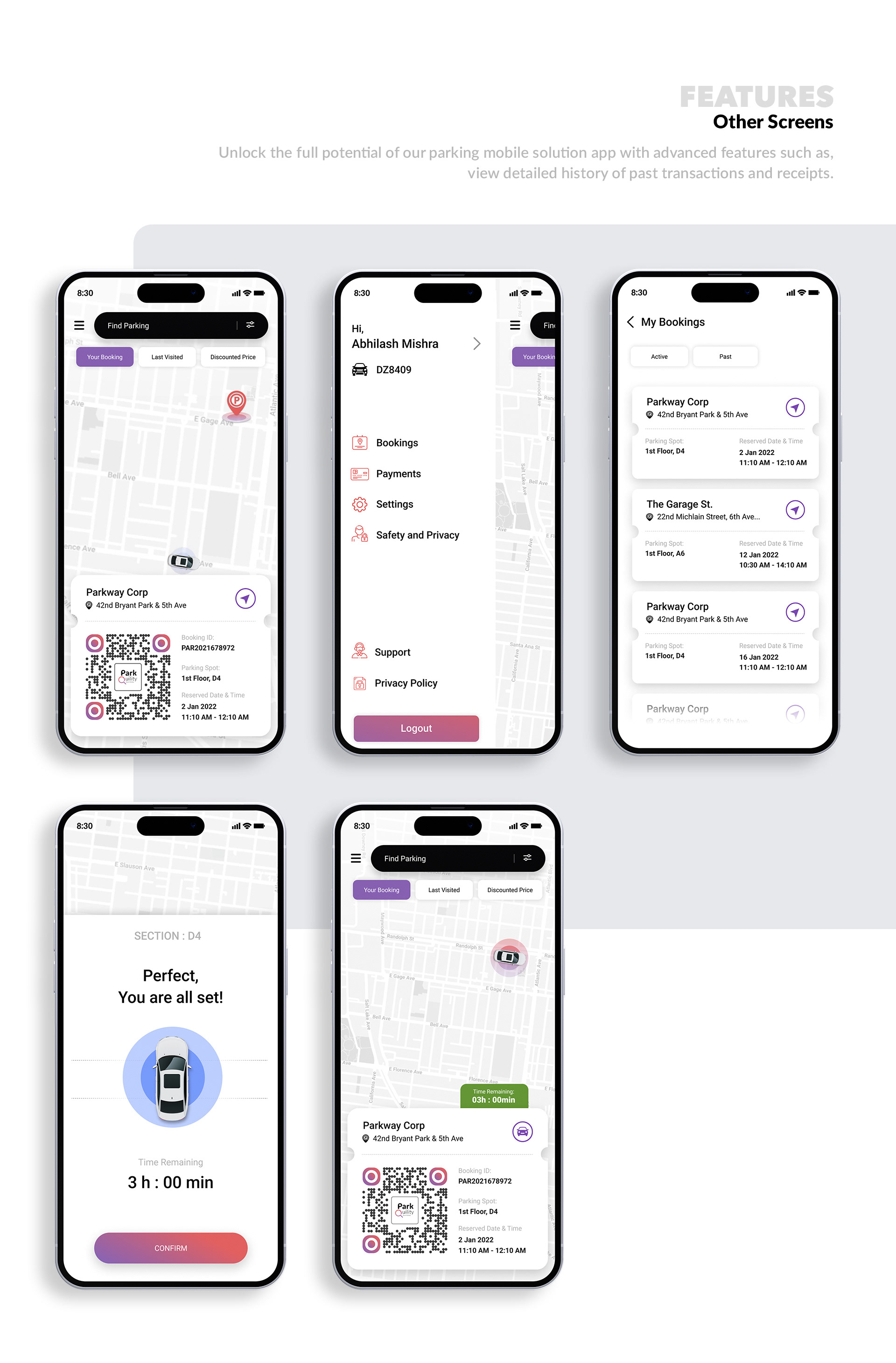
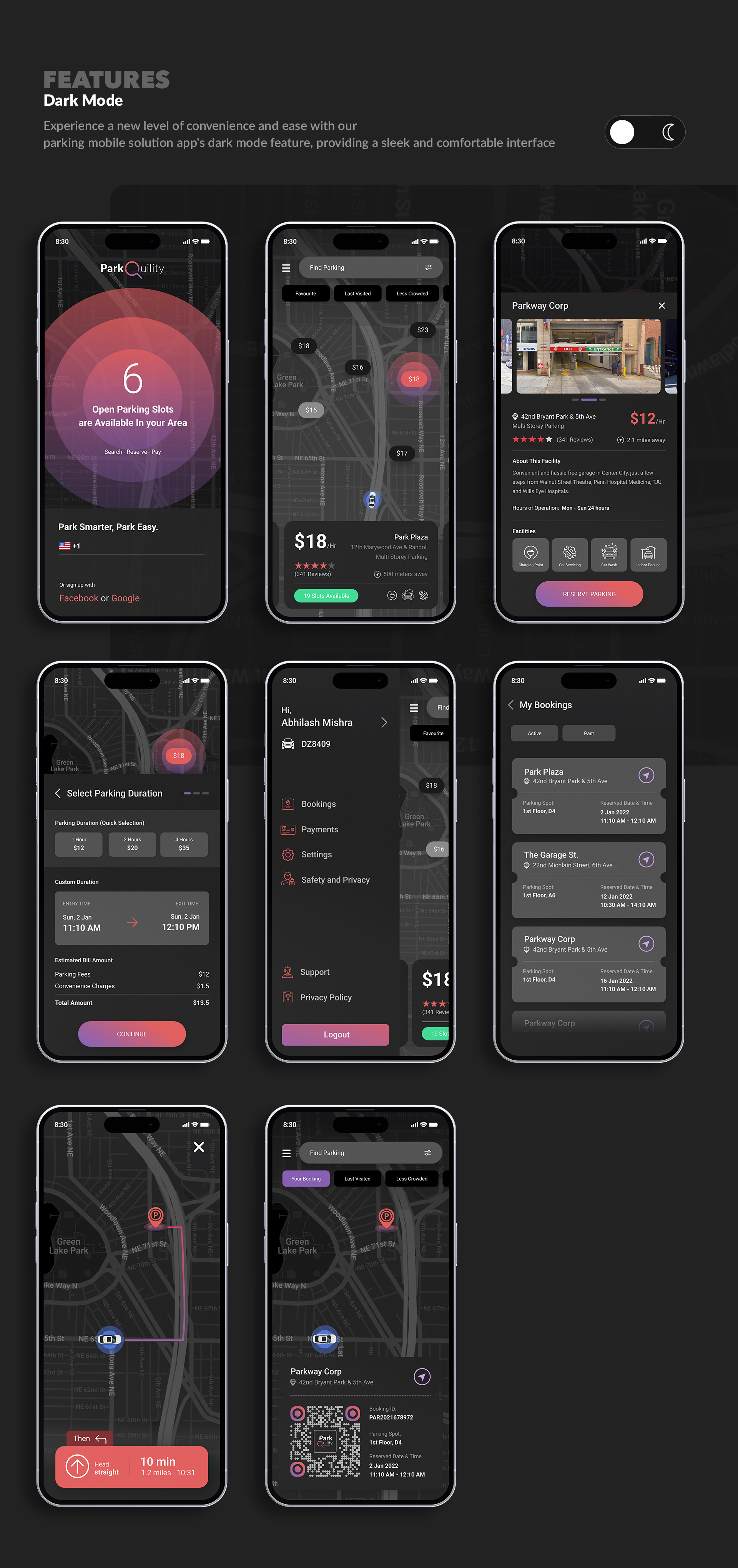

PROTOTYPE
Made with Figma
ADVERTISEMENT
Outdoor Branding



